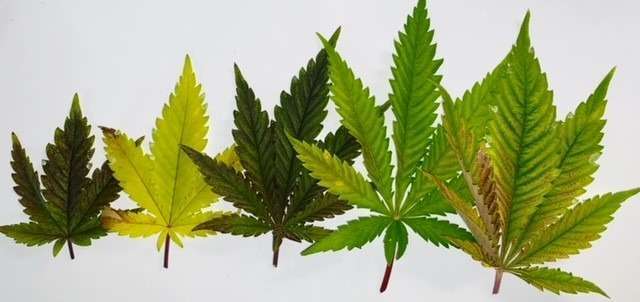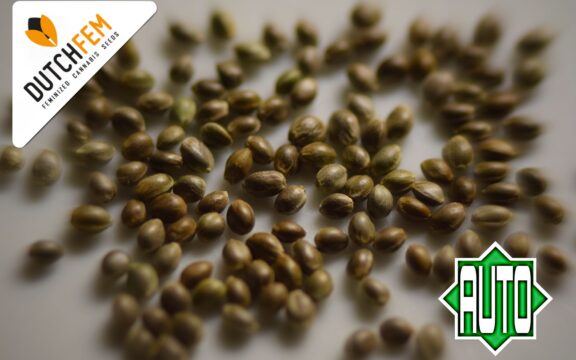Do Autoflowering Plants Need Nutrients?
If you’re new to growing cannabis or just diving into the world of autoflowers, you might be wondering, “Do autoflowering plants need nutrients?” The short answer is yes—but there’s a bit more to it. Just like their photoperiod counterparts, autoflowering plants require nutrients to thrive and reach their full potential. However, because of their shorter life cycle and typically smaller stature, their nutrient needs are slightly different, making them easier to overfeed if you’re not careful.
Autoflowering cannabis plants are unique because they don’t rely on light cycles to start flowering. Instead, they’re on a built-in timer, transitioning quickly from seedling to flowering in as little as 8-12 weeks. This fast growth means they need the right nutrients at the right time—but in smaller, carefully measured amounts. Overloading them with nutrients can cause more harm than good, leading to nutrient burn or stunted growth.
During their lifecycle, autoflowers need varying amounts of nitrogen, phosphorus, and potassium—key macronutrients for growth. Early on, they require more nitrogen to fuel leafy, vigorous growth. As they begin to flower, the focus shifts to phosphorus and potassium to support bud production. The good news? Whether you’re growing in soil, coco coir, or hydroponics, there are nutrient products designed specifically to help autoflowers thrive.
So, yes, autoflowering cannabis plants need nutrients, but the trick is finding the right balance. In this blog, we’ll break down their unique feeding requirements, share tips for avoiding overfeeding, and help you understand how to tailor nutrients to maximize your autoflower grow. Ready to learn the secrets to healthier plants and bigger harvests? Let’s dive in!
- Part 1: Start Light on Nutrients
- Part 2: Stages and Nutrient Needs
- Part 3: Soil vs. Hydroponics
- Part 4: Monitor pH Levels
- Part 5: Signs of Overfeeding or Underfeeding
- Part 6: Supplementary Nutrients
- Part 7: Basic Feeding Guide for Autoflowers
- Part 8: Common Nutrient Issues and Troubleshooting

Part 1: Start Light on Nutrients
When it comes to feeding autoflowering cannabis plants, less is more—especially in the beginning. Autoflowers are naturally more sensitive to nutrients compared to photoperiod plants. Their smaller size and shorter life cycle mean they don’t need as much food, and giving them too much can quickly lead to nutrient burn. That’s why starting light on nutrients is one of the most important tips for a successful autoflower grow.
What is nutrient burn? It’s what happens when your plants get more nutrients than they can handle. You’ll notice it when the tips of the leaves turn yellow or brown, eventually curling or crisping up. Overfeeding not only stresses the plant but can also slow down growth and reduce your final yield. To avoid this, it’s best to start with half-strength or even quarter-strength doses of nutrients, especially during the early stages of growth.
If you’re using pre-fertilized soil, like one from a quality brand, you might not need to feed your plants at all for the first couple of weeks. The soil already contains everything your seedlings need to get started. However, if you’re growing in coco coir or hydroponics, you’ll need to provide light nutrients from the beginning because these mediums don’t hold any natural nutrients.
The key is to start small and monitor your plants. If they’re thriving—dark green leaves, steady growth, no discoloration—you’re on the right track. If they start looking pale or sluggish, you can slowly increase nutrient strength. The golden rule? It’s much easier to add nutrients than to fix a problem caused by too much. By starting light, you’re setting your autoflowers up for a healthy, productive life.
Part 2: Do Autoflowering Plants Need Nutrients? Stages and Nutrient Needs
Autoflowering cannabis plants go through three main stages: seedling, vegetative, and flowering. Each stage has unique nutrient needs that, when met, help your plants grow strong and produce bigger, healthier buds. Understanding these stages is key to feeding your autoflowers correctly.
Seedling Stage (Weeks 1-2)
During the seedling stage, your autoflowers are delicate and don’t need extra nutrients. If you’re growing in high-quality, pre-fertilized soil, there’s no need to add anything—these soils already have enough nutrients to support your seedlings. Instead, focus on watering with pH-balanced water (around 6.0-7.0 for soil) and keeping your environment stable. If you’re using a nutrient-free medium like coco coir or hydroponics, you can start with a very mild nutrient solution at 1/4 strength to avoid deficiencies.
Vegetative Stage (Weeks 3-5)
Once your autoflowers develop a few sets of true leaves and start growing rapidly, they’ve entered the vegetative stage. During this phase, your plants need higher levels of nitrogen (N) to fuel healthy leaf and stem development. Nitrogen supports photosynthesis and helps your plants build a strong structure to hold future buds.
Use a nutrient mix with a higher nitrogen ratio, such as an NPK blend like 4-2-3 or similar. Start at half strength and monitor your plants for signs of healthy growth—vibrant green leaves and steady height increase. Be cautious not to overfeed, as autoflowers are still sensitive at this stage.
Flowering Stage (Weeks 6+)
When your plants start developing pistils (the white hairs signaling the start of flowering), it’s time to shift focus to bud production. During this stage, autoflowers need less nitrogen and more phosphorus (P) and potassium (K) to support flower development and resin production. Switch to bloom nutrients with an NPK ratio like 1-4-5 or 0-5-4. These nutrients help strengthen buds, boost terpene production, and increase yields.
By adjusting nutrients for each stage, you’ll give your autoflowers exactly what they need to thrive and produce a bountiful harvest!

Part 3: Soil vs. Hydroponics
The growing medium you choose plays a big role in how you feed your autoflowering cannabis plants. Whether you’re growing in soil or hydroponics, understanding how each medium works can help you provide the right nutrients at the right time.
In Soil
Soil is the most beginner-friendly option for growing autoflowers because it naturally contains nutrients that your plants can use during the early stages. If you’re using high-quality, nutrient-rich soil, such as Fox Farm Ocean Forest or Biobizz All-Mix, you may not need to add extra nutrients for the first 3-4 weeks. These soils come preloaded with enough nitrogen, phosphorus, and potassium to support healthy growth during the seedling and early vegetative stages.
As your plants grow and the nutrients in the soil become depleted, you’ll need to start supplementing with nutrients, especially when transitioning to the flowering stage. Always monitor your plants for signs of deficiencies—yellowing leaves or slow growth can indicate it’s time to start feeding. Be cautious not to overfeed, as soil can retain nutrients, leading to salt buildup.
In Hydroponics
Growing autoflowers in a hydroponic setup is a bit more advanced but offers faster growth and higher yields when done right. Unlike soil, hydroponics doesn’t contain any nutrients, so your plants will rely entirely on the nutrient solution you provide. This means you’ll need to carefully monitor and adjust the nutrient levels (measured as EC or PPM) and pH (ideal range: 5.5-6.5) to avoid deficiencies or imbalances.
Hydroponics allows for precise control over feeding, but because autoflowers are sensitive, it’s important to start with low-strength nutrient solutions and adjust gradually. With proper care, hydro can produce incredible results, making it a popular choice for experienced growers.
Whether you choose soil or hydroponics, tailoring your feeding approach to your medium is key to thriving autoflowers!
Part 4: Monitor pH Levels
When it comes to growing healthy autoflowering cannabis plants, keeping an eye on pH levels is just as important as providing the right nutrients. The pH of your growing medium affects how well your plants can absorb nutrients, and even if you’re feeding them everything they need, an improper pH can block nutrient uptake, leading to deficiencies.
For soil grows, the ideal pH range is 6.0–7.0. Soil has a natural buffering ability, but if the pH drifts too far outside this range, your plants may struggle to take in nutrients, even if the soil is nutrient-rich.
For hydroponics and coco coir, the pH needs to be more precise, between 5.5–6.5. In these setups, there’s no buffering, so small pH imbalances can quickly lead to nutrient lockout, where the roots can’t absorb certain nutrients.
It’s essential to test the pH of both your water/nutrient solution and the runoff (in soil) or reservoir (in hydro). Use a pH meter for accurate readings, and adjust with pH up or pH down solutions as needed.
By maintaining the correct pH, you ensure your autoflowers can absorb all the nutrients you’re providing, leading to healthy plants and bigger, better buds!

Part 5: Signs of Overfeeding or Underfeeding
Feeding your autoflowering cannabis plants the right amount of nutrients is essential for healthy growth, but it’s easy to give too much or too little. Learning to recognize the signs of overfeeding and underfeeding can save your plants and help you make adjustments before problems get out of hand.
Signs of Overfeeding
Overfeeding happens when plants get more nutrients than they can handle, leading to stress and potential damage. The most common symptom is nutrient burn, which shows up as yellow or brown tips on the leaves. In severe cases, the discoloration spreads, and leaves may curl or even become crispy. Overfeeding can also cause salt buildup in the growing medium, making it harder for roots to absorb water and nutrients.
To fix overfeeding, flush your plants with plain, pH-balanced water to remove excess nutrients, then restart feeding at a lower strength.
Signs of Underfeeding
Underfeeding occurs when your plants aren’t getting enough nutrients to support their growth. Common signs include pale or yellowing leaves, slow or stunted growth, and symptoms of specific deficiencies. For example, a nitrogen deficiency causes yellowing of older leaves, while a lack of phosphorus can lead to dark patches or purpling stems.
If you notice these symptoms, gradually increase nutrient strength, focusing on the nutrients your plants need most based on their growth stage.
By monitoring your plants closely and responding to these signs, you can maintain a healthy feeding balance and maximize your harvest.

Do Autoflowering Plants Need Nutrients? Part 6: Supplementary Nutrients
While the primary nutrients—nitrogen (N), phosphorus (P), and potassium (K)—are essential for autoflowering cannabis plants, supplementary nutrients like calcium, magnesium, and sulfur also play a crucial role in keeping your plants healthy. These are often referred to as micronutrients or secondary nutrients, and they can make a big difference, especially in coco coir or hydroponic systems.
Calcium (Ca)
Calcium is vital for cell structure and root development. A deficiency can lead to weak stems, brown spots on leaves, and stunted growth. Coco coir often binds calcium, making it less available to your plants, so adding a calcium supplement (like Cal-Mag) can prevent issues.
Magnesium (Mg)
Magnesium is a key component of chlorophyll, helping plants absorb light and produce energy. A lack of magnesium shows up as yellowing between the veins of older leaves. This is another common issue in coco and hydro systems, so it’s worth adding a Cal-Mag supplement or ensuring your nutrient solution includes magnesium.
Sulfur (S)
Sulfur supports protein production and gives cannabis its distinctive aroma. While deficiencies are rare, they can cause yellowing and weak growth.
By adding these micronutrients when needed and ensuring your pH is in the proper range, you’ll give your autoflowers the extra boost they need to grow strong, vibrant, and productive!
Part 7: Basic Feeding Guide for Autoflowers
Here’s a basic feeding guide and some tips tailored for autoflowering cannabis plants to help you optimize their growth:
Do Autoflowering Plants Need Nutrients? Autoflower Nutrient Schedule
1. Seedling Stage (Weeks 1-2)
- Nutrient Needs: Minimal or none. Quality soil or seedling mix usually provides enough nutrients.
- Tips:
- Use plain, pH-balanced water (pH 6.0-7.0 for soil; 5.5-6.5 for hydro).
- Avoid feeding until the seedling has developed 2-3 sets of true leaves.
2. Vegetative Stage (Weeks 3-5)
- Nutrient Needs: Focus on Nitrogen (N) for growth.
- Nutrient Mix:
- Nitrogen (High)
- Phosphorus (Moderate)
- Potassium (Moderate)
Example NPK: 3-1-2 or 4-2-3
- Feeding Schedule:
- Start at 1/4 strength of the recommended dosage on nutrient labels.
- Gradually increase to 1/2 strength if plants respond well.
- Tips:
- Watch for rapid growth and ensure leaves stay vibrant green.
- Use cal-mag supplements if needed (especially in coco coir).
3. Pre-Flower/Transition Stage (Weeks 5-6)
- Nutrient Needs: Shift toward higher phosphorus and potassium to support the transition.
- Nutrient Mix:
- Nitrogen (Moderate)
- Phosphorus (Higher)
- Potassium (Higher)
Example NPK: 2-3-4 or similar.
- Tips:
- Gradually reduce nitrogen to avoid excessive foliage growth.
- Keep monitoring pH and adjust as needed for proper nutrient uptake.
4. Flowering Stage (Weeks 7-10)
- Nutrient Needs: High in Phosphorus (P) and Potassium (K) for bud development.
- Nutrient Mix:
- Nitrogen (Low)
- Phosphorus (High)
- Potassium (High)
Example NPK: 1-4-5 or 0-5-4.
- Tips:
- Use bloom boosters or flowering-specific nutrients for bigger buds.
- Ensure the plants don’t get overfed; look for yellow leaf tips as a sign to reduce strength.
5. Final Weeks (Flush)
- Nutrient Needs: None.
- Tips:
- Flush your plants with plain pH-balanced water for 1-2 weeks before harvest. This removes excess nutrients and improves taste and aroma.
Key Tips for Feeding Autoflowers
- Avoid Overfeeding: Less is more. Start with diluted nutrient solutions and increase gradually.
- Use Quality Soil: Pre-fertilized soil (e.g., Fox Farm, Biobizz) can reduce the need for additional feeding early on.
- Watering Practices: Let the soil dry out between waterings to prevent overwatering.
- Micronutrients: Add calcium and magnesium supplements (cal-mag) if you see signs of deficiency, like yellowing leaves or spots.
- Observe Your Plants: Nutrient needs vary based on strain and growing conditions. Look for visual cues like leaf color, curling, or spots to adjust feeding.
Part 8: Do Autoflowering Plants Need Nutrients? Common Nutrient Issues and Troubleshooting
Here are signs of common problems and solutions:
1. Nutrient Burn (Overfeeding)
- Symptoms: Yellow or brown tips on leaves; crispy edges.
- Fix:
- Flush with pH-balanced water to remove excess salts.
- Resume feeding at lower strength.
2. Nitrogen Deficiency
- Symptoms: Yellowing of lower leaves, slow growth.
- Fix:
- Add a nitrogen-rich feed (veg nutrients).
- Check pH to ensure proper uptake.
3. Calcium or Magnesium Deficiency
- Symptoms:
- Calcium: Brown spots or crinkled leaves.
- Magnesium: Yellowing between leaf veins.
- Fix:
- Add cal-mag supplements.
- Ensure pH is within the proper range (6.2-6.5 in soil; 5.8-6.2 in coco/hydro).
4. Phosphorus Deficiency
- Symptoms: Purple or dark patches on leaves, stunted growth during flowering.
- Fix:
- Use bloom nutrients with higher phosphorus.
5. Potassium Deficiency
- Symptoms: Yellow or brown edges on leaves; curling.
- Fix:
- Increase potassium levels using flowering nutrients.
All about Autoflowering Autoflowers
Overfeeding or Underfeeding Cannabis
Maximizing Autoflower Success: Choosing the Ideal Container Size



















You must be logged in to post a comment.